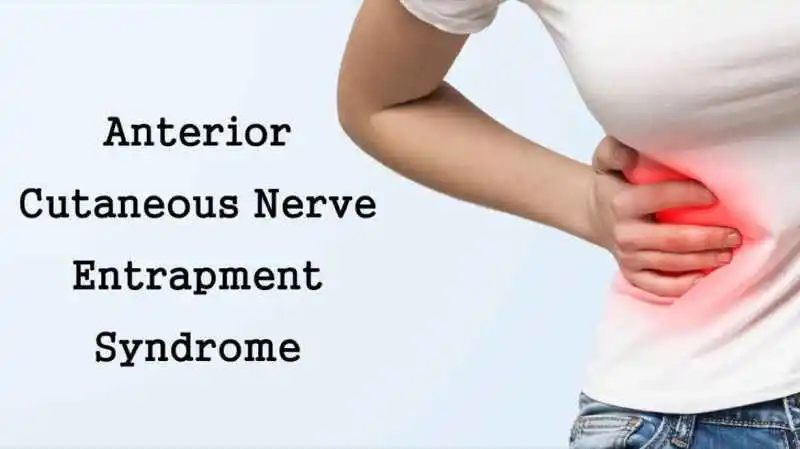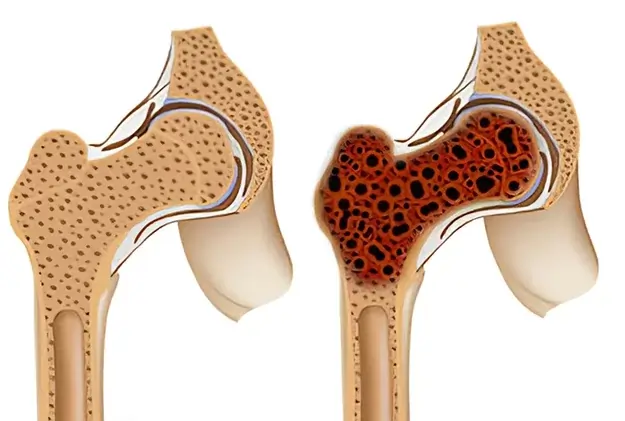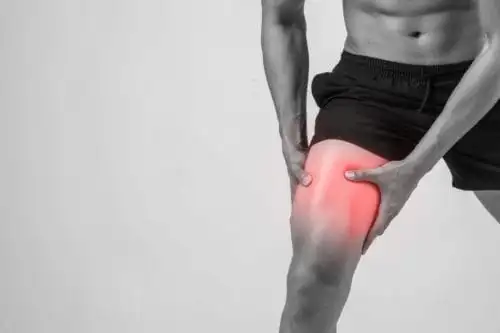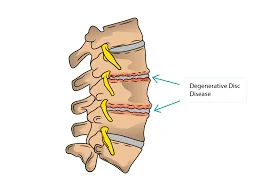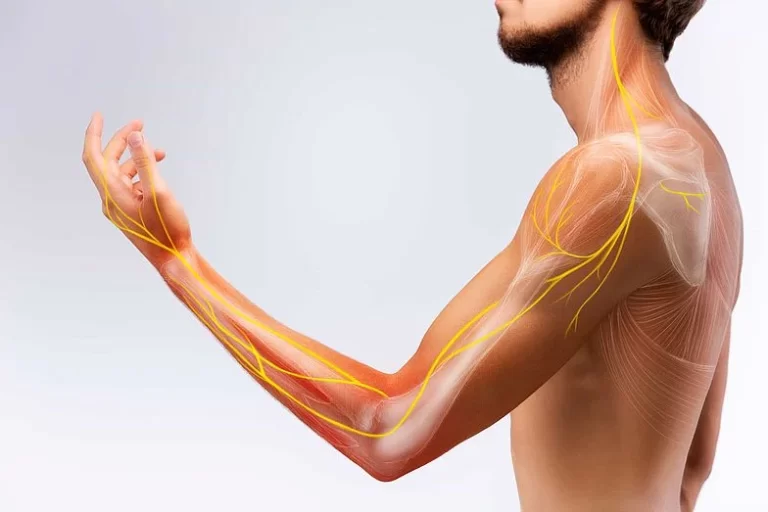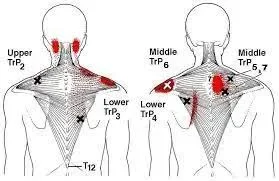Anterior Cutaneous Nerve Entrapment Syndrome
Anterior cutaneous nerve entrapment syndrome is the most prevalent cause of stomach-related pain in both adults and children. When the muscle pinches or traps the anterior cutaneous abdominal nerves inside the abdominal wall, a condition develops. The ‘entrapment’ of lower thoracic intercostal nerves (7–12) in abdominal muscles is the cause of the intense localized nerve pain (neuropathic pain) that is usually felt at the front of the abdomen. Because of this, the illness is still mainly undetected and challenging to cure. Patients typically present with significant chronic pain just lateral (near) the midline, which is frequently refractory.
Applied Anatomy
- The sense of sensation supplied to the abdomen wall is provided by the anterior and lateral cutaneous branches of the anterior rami of the 7th–12th thoracic nerves. T7 supplies the infrasternal area, and T10 supplies the level at the umbilicus. The area above the pubis is supplied by the iliohypogastric nerve (T12, L1) and is also affected by the anterior ramus of L1. Supplying in the area above the pubis, the iliohypogastric nerve (T12, L1) is likewise impacted by the anterior ramus of L1.
- The transverse abdomens and internal oblique muscles are situated in the plane where these sensory nerves are located. After passing through the posterior wall of the rectus sheath, each thoracic nerve enters a neurovascular channel in the rectus muscle to nourish the skin. The rectus muscle contains a fibrous ring encircling each neurovascular channel, which should provide unrestricted anterior cutaneous nerve passage. But this ring may also experience ischemia or compression of the nerves, which could result in symptoms of ACNES (abdominal cutaneous nerve entrapment syndrome).
- The anterior cutaneous branches of the thoracoabdominal (T7–11) and subcostal (T12) nerves are especially prone to entrapment because of the neurovascular routes in the rectus muscle. When a nerve reverses course to travel over a fibrous or muscular band or enter a tunnel, it can become entrapped in the peripheral nervous system. Upon entering the rectus channel, they undergo a roughly 90° direction change and go through a fibrous ring before emerging through a gap in the fibrous rectus sheath that covers them. Together, these several factors make them vulnerable to entrapment.
What is the Anterior Cutaneous Nerve Entrapment Syndrome?
- Abdominal cutaneous nerve entrapment syndrome (ACNES), which is currently recognized, as one of the reasons for chronic abdominal discomfort has been associated with several causes, including nerve entrapment.
- It is still far too often misdiagnosed and, as a result, is difficult to treat. Patients typically present with significant chronic pain just lateral (near) the midline, which is frequently refractory. The lateral border of the rectus abdomens muscle is thought to be where the cutaneous branches of the lower thoracoabdominal intercostal nerves become “trapped.”
What are the causes of the Anterior Cutaneous Nerve Entrapment Syndrome?
The cutaneous terminal branches of the intercostal nerve become trapped in the muscle foramen as they travel through the rectus abdomens, resulting in anterior cutaneous nerve entrapment syndrome(ACNES) and perhaps ischemic neuropathy.
Although the exact cause is unknown, there appears to be a causal relationship with pregnancy, abdominal surgery of any type, and occasionally trauma. But for over half of the patients, the pain appears out of nowhere and is not associated with any particular event.
Nerves can become stuck for several reasons, such as:
- Rips in the muscles caused by wounds that healed with an internal scar.
- Scars left by previous abdominal wall surgery.
- Extremely flexible cartilage.
What are the symptoms of the Anterior Cutaneous Nerve Entrapment Syndrome?
- While children often complain of abdominal pain, anterior cutaneous nerve entrapment syndrome(ACNES) presents with certain different symptoms. These include persistent discomfort and tenderness in the abdomen over the same small area, usually measuring less than two millimeters across.
- When anterior cutaneous nerve entrapment syndrome (ACNES) develops, abdominal nerve pain frequently becomes severe. It can worsen with activities that tense the muscles in the abdomen. Twisting, bending, or sitting up may cause the patient’s pain to radiate.
- Your child may experience less severe pain while lying on their back and more severe pain when sitting or sleeping on their side.
When a child has anterior cutaneous nerve entrapment syndrome, what causes their pain?
- clothing or belts that compress over the abdomen.
- Their laughter, exercise, and sneezing caused the muscles in their abdominal wall to tense.
- Using oral contraceptives can potentially raise your chance of developing ACNES.
What is the diagnostic process for Anterior Cutaneous Nerve Entrapment Syndrome?
Diagnoses of anterior cutaneous nerve entrapment syndrome(ACNES) can be challenging, as it is sometimes mistaken for other illnesses such as hernias, appendicitis, or cholecystitis that all produce discomfort in the abdominal wall.
There are no diagnostic procedures for anterior cutaneous nerve entrapment syndrome(ACNES). The only way to diagnose it is through a physical assessment. The physician treating your child will search for these items:
- A persistent area of skin that becomes sensitive to cold or mild touch
- Pinching that area of the skin causes pain, but not in other places
- Tapping and pressing on that area causes pain and soreness, but not elsewhere.
- Your child tensing their abdomen by elevating their head, shoulders, or legs is a good sign that they have Carnett’s syndrome because pressing makes the pain worse.
- Pain reduction after receiving steroid or local anesthetic injections in the most painful areas.
What are the Differential diagnoses for Anterior Cutaneous Nerve Entrapment Syndrome?
Hernias, tumors, rips, and endometriosis of the abdominal wall, radiculopathy (diabetic, traumatic, herpetic), herniated spinal disc, abnormalities of the ribs, and vertebral column are examples of differential diagnoses.
What is the treatment for Anterior Cutaneous Nerve Entrapment Syndrome?
Conservative Treatment
The goal of treatment is to relieve pain both temporarily and permanently; certain methods may also relieve pinched nerves. Among them are:
Medication: While non-specific pharmacological treatments are frequently employed, it is unknown if they are effective in cases of established anterior cutaneous nerve entrapment syndrome(ACNES). Examples of these treatments include paracetamol, non-steroid anti-inflammatories, anti-convulsants, anti-depressants, and opioids.
In addition to anti-inflammatory drugs, painkillers that are expressly prescribed for nerve pain, such as gabapentin and amitriptyline, can also be utilized. An expert in pain management can evaluate, counsel, and prescribe these drugs. They can also regularly monitor the medication’s efficacy in managing the patient’s pain.
Injections at trigger points: Injecting lidocaine or steroids locally at the location of the abdomen pain may be the first step taken by your child’s doctor. If the discomfort persists or comes back later, a series of injections can be necessary. These injections, often referred to as trigger point injections, can cure the discomfort after just one injection. The doctor treating your kid may explore further alternatives if the discomfort returns following several trigger point injections, including Alcohol injected to cause chemical neurolysis, which reduces nerve pain.
Pulsed radio frequency (PRF), which interferes with nerve signals by delivering a little electrical current to the painful area
Surgery
Neurectomy: Permanent pain relief may be achieved by a surgical neurectomy, which entails cutting off particular nerve branches located within the abdomen wall at the site of the discomfort. Skin feeling is lost over the spot around 1/3 of the time. Under the uncomfortable area, the abdomen wall is examined by surgeons, who then cut any branches of the cutaneous nerve they locate. The abdomen is not sliced into them. According to our research, almost 80% of Boston Children’s surgical neurectomy patients for abdominal cutaneous nerve entrapment syndrome(ACNES) experience no pain following their treatment.
Prognosis: Diagnostic delay is typical. If left untreated, anterior cutaneous nerve entrapment syndrome(ACNES) can result in functional handicap and a lower quality of life, which raises the expense of medical treatment and makes medical professionals more aware of the condition.
Physical Therapy to Treat the Anterior Cutaneous Nerve Entrapment Syndrome
Abdominal binders, transcutaneous electrical nerve stimulation equipment, and the use of heat or cold therapy can all be used to manage the acute episodes of anterior cutaneous nerve entrapment syndrome (ACNES). The goals of physical therapy for anterior cutaneous nerve entrapment syndrome (ACNES) are usually to enhance function and reduce symptoms.
The following are some typical physical therapy methods to use:
- Electrical modalities: To reduce pain and encourage muscular relaxation, practitioners may employ techniques like ultrasound, electrical stimulation (TENS), or heat/cold therapy.
- Education: It is important to educate the patient about anterior cutaneous nerve entrapment syndrome (ACNES), its triggers, and how to prevent activities that exacerbate the pain.
- Postural correction: Advice for sitting, standing, and movement patterns that lessen pressure on the affected nerves are examples of postural advice.
- Manual therapy: Methods like myofascial release and soft tissue mobilization can relax muscular strain and increase the flexibility of the abdominal wall’s tissue, which may help relieve nerve compression.
- Stretching and Strengthening Exercises for Core Stabilization: Specific exercises can help increase the abdominal muscles’ flexibility and strength. Exercises that strengthen the back, pelvic, and abdominal muscles can improve the spine’s and the abdomen’s general stability and support, thereby decreasing the pressure on the nerves. These exercises, which may involve mild abdominal wall muscle stretching, are designed to prevent aggravating pain.
- Breathing Exercises and Meditation: Teaching people relaxation methods like meditation or deep breathing can help them deal with pain and feel better overall.
Guiding the patient in a gradual return to sports or regular activities, making sure that the activities are resumed in a way that reduces the chance of re-injury or worsening of symptoms. Achieving the best possible results when managing anterior cutaneous nerve entrapment syndrome (ACNES) with physical therapy requires regular assessments of progress and modification of the treatment plan as necessary.
What are the prevention for the Anterior Cutaneous Nerve Entrapment Syndrome?
Anterior Cutaneous Nerve Entrapment Syndrome (ACNES) can be prevented by being aware of its possible causes and risk factors and taking necessary measures to reduce them. The following precautions can help lower the chance of getting ACNES:
- Stress on the abdominal muscles and nerves can be avoided by keeping good posture during lifting, sitting, and standing.
- Reducing tension on the muscles and nerves in the abdomen can be achieved by taking rests between activities, lifting with good technique, and changing up your exercises.
- Regular exercise that strengthens the back, pelvic, and abdominal core muscles can support the spine and abdomen and lessen the chance of muscle imbalances that lead to nerve entrapment.
- It is essential to have good body mechanics when exercising and performing regular tasks. This includes avoiding sudden twisting actions, keeping your spine in a neutral position, and lifting heavy objects with your legs rather than your back.
- Reducing the risk of developing anterior cutaneous nerve entrapment syndrome (ACNES) and relieving pressure on the abdominal wall can be achieved by maintaining a healthy weight through food and exercise.
- Stress can be reduced by using stress management strategies including meditation, relaxation exercises, and regular exercise.
- Eating and drinking the right foods and staying hydrated promote general muscular health and flexibility, which lowers the chance of imbalances and spasms that worsen ACNES.
- Keep an eye out for any symptoms of abdominal pain or discomfort. If your stomach pain is continuous or recurrent, get evaluated by a doctor to find and treat any underlying reasons as soon as possible.
Summary
Patients suffering from anterior cutaneous nerve entrapment syndrome(ACNES) should be identified and treated as soon as possible to avoid needless stress, discomfort, missed work, and financial hardship. It could be able to stop more complex pain and central sensitization from developing. A diagnosis may be obtained using the patient’s medical history, physical examination, and reaction to local anesthetic infiltration. Currently, minimally invasive injectable therapies are the mainstay of treatment when conservative approaches fail. Quantitative sensory testing and entrapment release operations are two non-invasive diagnostic techniques that should be the subject of future research.
FAQs
What symptoms of ACNES are present?
Anterior cutaneous nerve entrapment syndrome(ACNES) symptoms can be either acute or long-lasting. Localized, dull, or scorching pain that radiates obliquely downward in the lower abdomen and horizontally in the upper half of the abdomen with a sharp component (typically on one side) are some descriptions of acute pain. When the patient sits up, bends, or twists, the discomfort could become more intense.
Can the ACNES syndrome be cured?
Large centers that perform anterior cutaneous nerve entrapment syndrome(ACNES) operations report a 70% success rate after a year of good performance. Approximately two-thirds of patients do recover, experiencing an increase in their quality of life along with a decrease and, frequently, a complete stop to their pain medication.
How is the anterior cutaneous nerve entrapment syndrome(ACNES) tested?
There are no diagnostic procedures for anterior cutaneous nerve entrapment syndrome(ACNES). The only way to diagnose it is through a physical assessment. The physician treating your child will search for these things: a persistent area of skin that becomes sensitive to cold or mild touch.
What is the course of treatment for anterior cutaneous nerve entrapment syndrome(ACNES)
In addition to systemic medication, the current management strategies for anterior cutaneous nerve entrapment syndrome(ACNES) include surgical neurectomy, chemical neurolysis, ultrasound-guided blocks, diagnostic and therapeutic trigger point injections, and some newer methods like radiofrequency ablation and neuromodulation.
How is anterior cutaneous nerve entrapment syndrome(ACNES) diagnosed?
When a patient is examined clinically, the point of tenderness can be felt when the abdomen is soft. If the patient is asked to ‘sit up’ and maintain this position, meaning to tense the abdominal muscles, the pain will be palpable at this point.
Which type of medical professional attends to individuals who have ACNES, or anterior cutaneous nerve entrapment syndrome?
A pain management specialist may perform nerve ablation as a kind of treatment, or a general or neurosurgeon may do surgery.
Does bloating result from anterior cutaneous nerve entrapment syndrome(ACNES)?
While pain is the primary symptom of anterior cutaneous nerve entrapment syndrome (ACNES), about 50% of patients also report experiencing a variety of visceral problems, like nausea or bloating.
How does anterior cutaneous nerve entrapment syndrome(ACNES) occur?
Intra- or extra-abdominal pressure, ischemia, compression due to the fat pad that ordinarily surrounds the nerve herniating into the fibrous canal around it, or localized scarring can all result in nerve entrapment.
References
- Boston Children’s Hospital – Anterior Cutaneous Nerve Entrapment Syndrome (ACNES)(n.d.). https://www.childrenshospital.org/conditions/anterior-cutaneous-nerve-entrapment-syndrome
- Abdominal cutaneous nerve entrapment syndrome (ACNES). (n.d.). https://www.manchestersurgicalclinic.com/conditions/abdominal-pain/acnes
- UpToDate. (n.d.). UpToDate. https://www.uptodate.com/contents/anterior-cutaneous-nerve-entrapment-syndrome
- Orphanet: Anterior cutaneous nerve entrapment syndrome. (n.d.). https://www.orpha.net/en/disease/detail/51890

